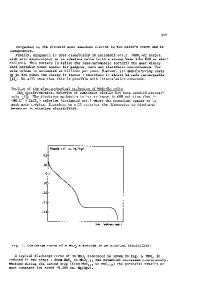Chain structure-dependent electrochemical performance of polyimide cathode materials for lithium-ion batteries
- PDF / 3,448,274 Bytes
- 11 Pages / 595.276 x 790.866 pts Page_size
- 25 Downloads / 374 Views
Chain structure-dependent electrochemical performance of polyimide cathode materials for lithiumion batteries Xufei Liu1, Shengqiang Qiu2, Peng Mei1, Qing Zhang2,3,*
, and Yingkui Yang1,2,3,*
1
Key Laboratory of Catalysis and Energy Materials Chemistry of Ministry of Education and Hubei Key Laboratory of Catalysis and Materials Science, South-Central University for Nationalities, Wuhan 430074, China 2 Ministry-of-Education Key Laboratory for Green Preparation and Application of Functional Materials, School of Materials Science and Engineering, Hubei University, Wuhan 430074, China 3 Hubei Engineering Technology Research Centre of Energy Polymer Materials, School of Chemistry and Materials Science, SouthCentral University for Nationalities, Wuhan 430074, China
Received: 2 August 2020
ABSTRACT
Accepted: 26 October 2020
Organic polyimides have received an ever-growing interest in lithium-ion batteries based on the reversible anion stabilization mechanism of redox-active carbonyl groups due to their high theoretical capacities, resource sustainability, and diverse chain structures. Herein, four linear polyimides with different chain structures were synthesized by a facile and green hydrothermal method. The chain structure-electrochemical performance relationship was explored by regulating active anhydride units and diamine linkers. The incorporation of flexible linkers between redox-active anhydrides results in the facile movement of polyimide chains and the formation of porous networks with abundant active sites. In contrast, rigid aromatic linkers with strong p–p conjugation tend to assemble into the orderly-stacked sheets, enabling the efficient electron transfer. When used as the battery cathode, 1,4,5,8-naphthalenetetracarboxylic dianhydride-based polyimide with a relatively flexible linker delivers the largest specific capacity. Such a polyimide also demonstrates the high cycling stability with a capacity retention up to 52% over 10000 cycles. In contrast, pyromellitic dianhydride-based polyimide with a benzene-enriched linker exhibits the lowest capacity and poor rate capability due to its densely-stacked sheets and limited exposure of active groups. The chain structure-dependent performance relationship of polyimides would offer new insights into the rational design of highperformance organic electrodes for the next-generation batteries.
Ó
Springer Science+Business
Media, LLC, part of Springer Nature 2020
Handling Editor: Kyle Brinkman. Xufei Liu and Shengqiang Qiu contributed equally to this work.
Address correspondence to E-mail: [email protected]; [email protected]
https://doi.org/10.1007/s10853-020-05510-9
J Mater Sci
Introduction With the ever-growing awareness for the environmental pollution and energy crisis, lithium-ion batteries (LIBs) been recognized as the most promising clean energy devices for the booming consumer electronics, electric vehicles, and smart grids [1–3]. However, traditional LIBs have commonly used the inorganic cathode materials such as transition-met
Data Loading...











